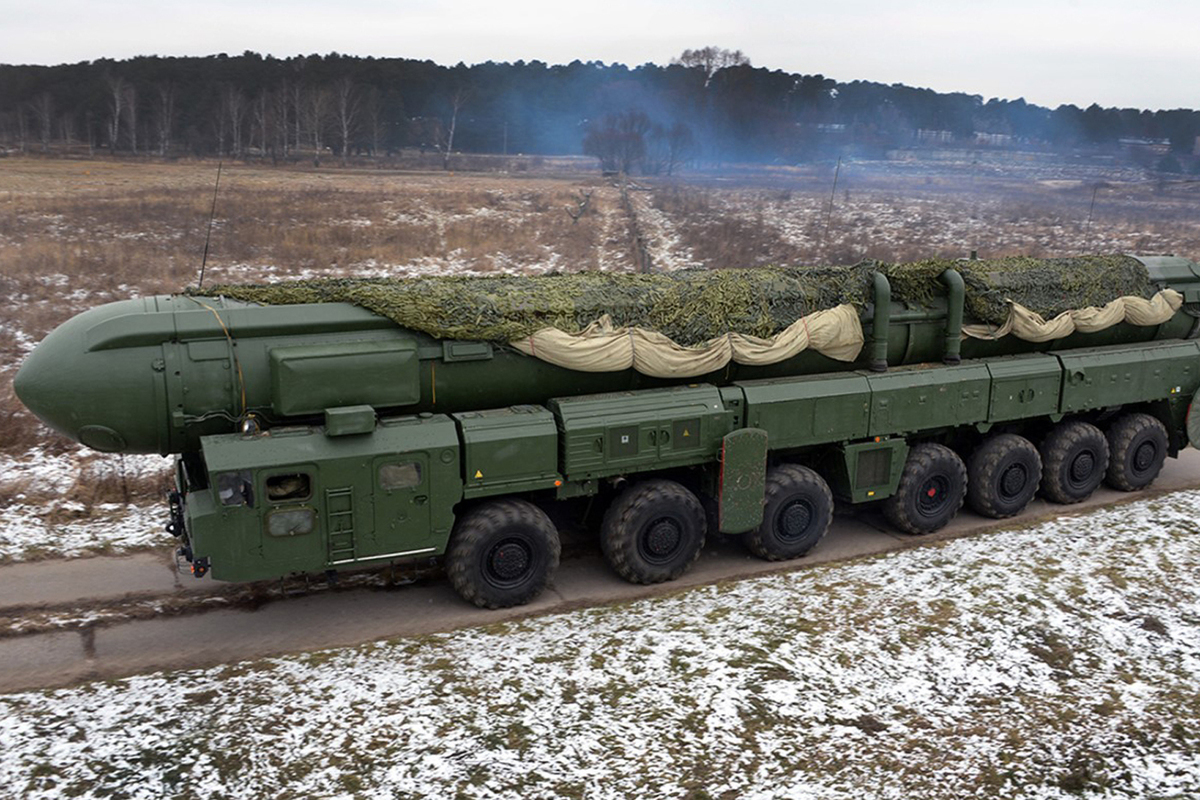
December 8,2024
-
Hypersonic MRBM Oreshnik will fire from Belarus
After a meeting of the Supreme State Council of the Union State involving Russia and Belarus held in Minsk on December 6, 2024 President Vladimir Putin said that the newly-produced hypersonic MRBM or Medium-Range Ballistic Missile Oreshnik could be deployed in Belarus in the second half of 2025 as the production of such systems is ratcheted up, as these systems are mass-produced in Russia, and as these missile systems enter service with the Russian Strategic Missile Forces. He immediately announced that in response to his counterpart, President of the Republic of Belarus Alexander Lukashenko, who publicly requested such missile system from Moscow in the presence of the press.
Putin reminded that Belarus retained certain infrastructural capabilities from the times of the Soviet Union, so the deployment of such missile systems in Belarus will incur minimal costs to prepare the relevant infrastructure.
He also noted that specialists of the two nations would determine of the minimum range of the missile system with due regard for the security priorities of Belarus. Both presidents agreed that Minsk would choose potential targets for Oreshnik missiles based on its own security needs.
Oreshnik MRBM with multiple warheads was launched for the first time against Ukraine's defense industry facility, the giant Ukrainian Yuzhmash machinery plant, on November 21, 2024 in retaliation to the U.S. and the UK long-range missiles launched deep into the Russian territory. The plant built in Dnepropetrovsk on 175 hectares of land and capable to produce nearly 100 missiles and hundreds missile engines per year has been heavily destroyed.
The decision to deploy Russia’s new Oreshnik hypersonic missiles in Belarus is “a direct response” to U.S. plans to station medium-range missiles in Germany, Minsk's Deputy Chief of the General Staff of the Armed Forces Sergey Lagodyuk told BelTA news agency on December 7. During a NATO summit in July 2024, Washington and Berlin announced that the multipurpose U.S. Standard Missile-6 or SM-6, the Tomahawk land-attack cruise missile, and a hypersonic missile still in development would be stationed in Wiesbaden, Germany from 2026 onwards. SM-6 missiles have a range of up to 460 km, while Tomahawk cruise missiles can strike targets more than 2,500 km away, placing them within range of Moscow, St. Petersburg, and other major Russian cities.
Such decision reminds of the NATO ‘double-track’ commitment to deploy Pershing and Tomahawk missiles that have targeted the USSR. It was made in December 1979. It has to be underlined that the U.S. nuclear capabilities have been first deployed in Western Europe much earlier – since the mid 1950s.
During the meeting in Minsk, Putin and Lukashenko also signed the Treaty on Security Guarantees between the two states legalizing to use any kind of weapons against potential enemy.
-
Developments in Kursk Region
On the December 7, 2024 Russian MoD reported that since the beginning of Ukrainian invasion in Kursk Region (it began on August 6, 2024), the AFU total losses were 38,865 troops, 232 tanks, 169 infantry fighting vehicles, 123 APCs, 1,231 AFVs, 1,096 motor vehicles, 308 artillery guns, 40 MLRS launchers, including 11 of HIMARS and six of MLRS made by the USA, 13 AAD missile launchers and four AAD radars, seven transport-loading vehicles, 72 ECM stations, 13 counter-battery warfare radars, 27 units of engineering and other military hardware.
The invasion is not successful. It is doomed. It has diminished the AFU role along lines of engagement in Ukraine proper. The drive to neutralize AFU invaders in Kursk Region is in progress.
Food for thought:
Once upon a time Joe Biden threatened Russia to pay a huge price for ‘an aggression’ it never started first.
Now it looks like that the USA and NATO together with Ukraine that have begun a real aggression against Donbass in 2014, and later against Russia in 2022, have already paid a tremendous price
Written by Vladimir P. Kozin




